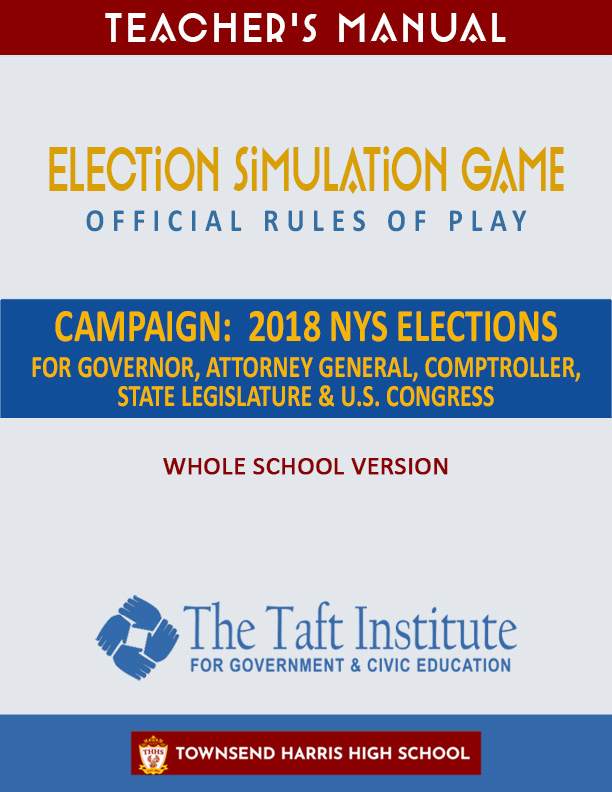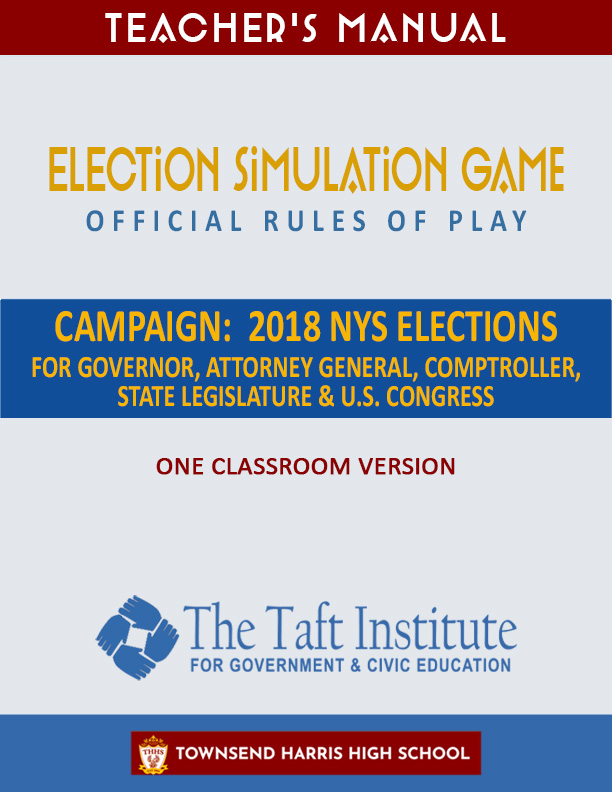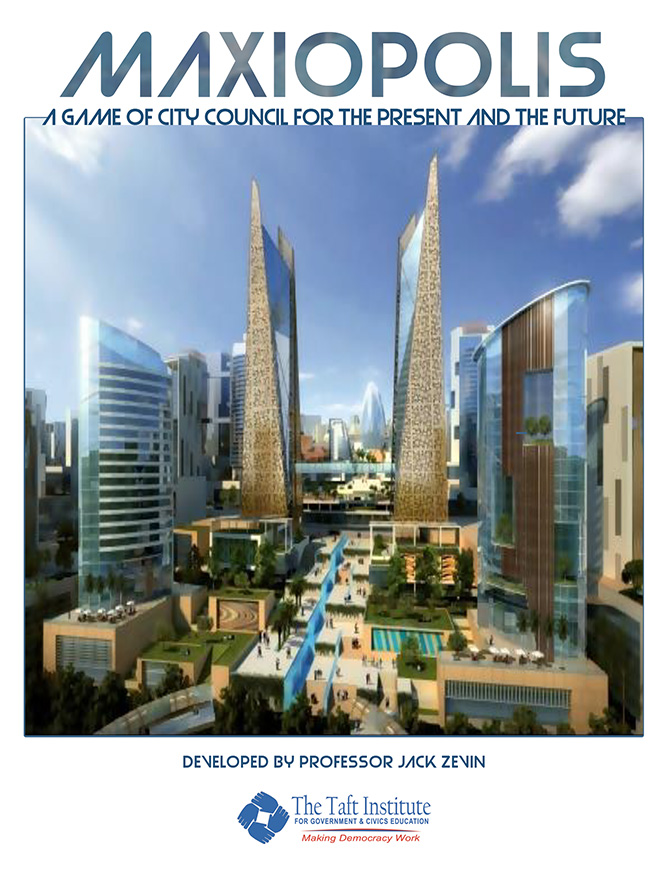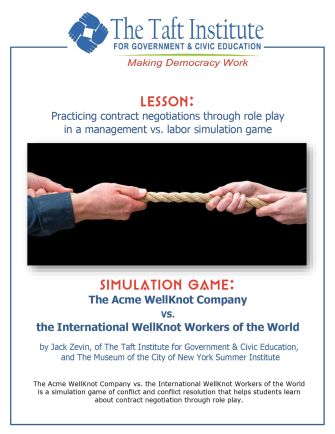Teachers Manuals
SCROLL DOWN & REGISTER BELOW TO GET FREE DOWNLOADS OF OUR TEACHERS MANUALS
ELECTION SIMULATION GAMES
Our election simulation games range from a whole-school model to a one-classroom version. In the whole-school model for high schools the seniors play the active political roles while the rest of the school acts as the voters. The active political roles include the candidates and the campaigns, various selected interest groups, the media, and a group that acts as the enforcer of the simulation’s rules (the Board of Elections). The manual provides estimates for the amounts of simbucks (simulation money) given to the campaigns and various selected interest groups to spend on advertising and other activities. Several campaigns are included and the simulation is geared to happen at the same time as the real world election—from the start of school in September to the day before the real-world election--so that students playing particular roles have to adapt to the actions and events that affect their real world counterparts.
By contrast, the one classroom version focusses on one campaign and gives active roles to a few students while the rest act as voters. It can also be played from September to November, but you can adapt our model to any level, any time, and any setting. The key elements are competition and rigor. Students are given the resources to carry out a political campaign or to be voters, and then they are held accountable for the way they perform those roles.
You could do a one week simulation in one classroom that focuses on one contest. You could extend the time and the scope by including a second contest and going for two weeks or more. The essential point is to treat the manual as a resource—take what works for you and have some fun!
SCROLL DOWN TO REGISTER AND GET FREE DOWNLOADS
OF OUR TEACHERS MANUALS
CAMPAIGN: 2024 PRESIDENTIAL AND CONGRESSIONAL ELECTIONS
This simulation game focusses on the 2024 Presidential and Congressional elections.
We also include the superpacs that have become such an important part of our politics. With regard to this and all the other elements of the simulation, you should feel entirely free to pick and choose what you will use. You could do a one week simulation in one classroom that only focuses on the Presidential race. You could extend the time and the scope by doing one competitive Congressional race and going for two weeks.
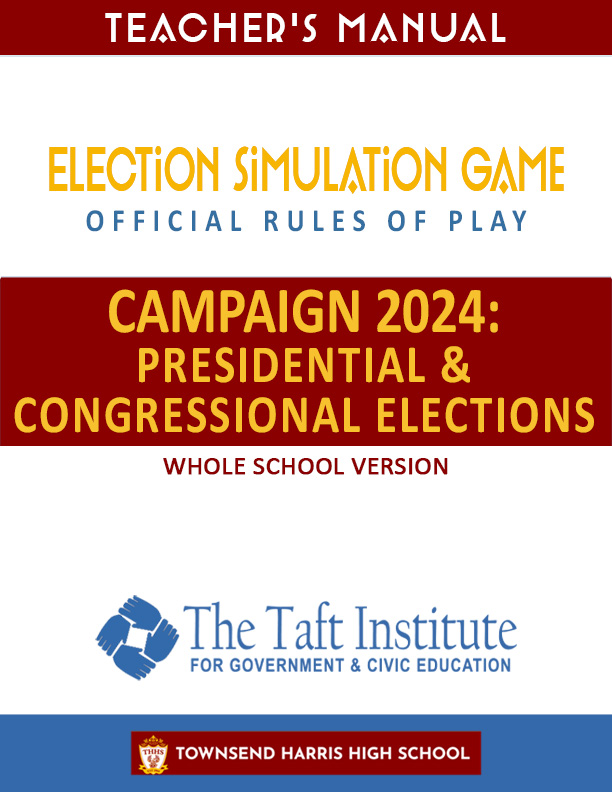
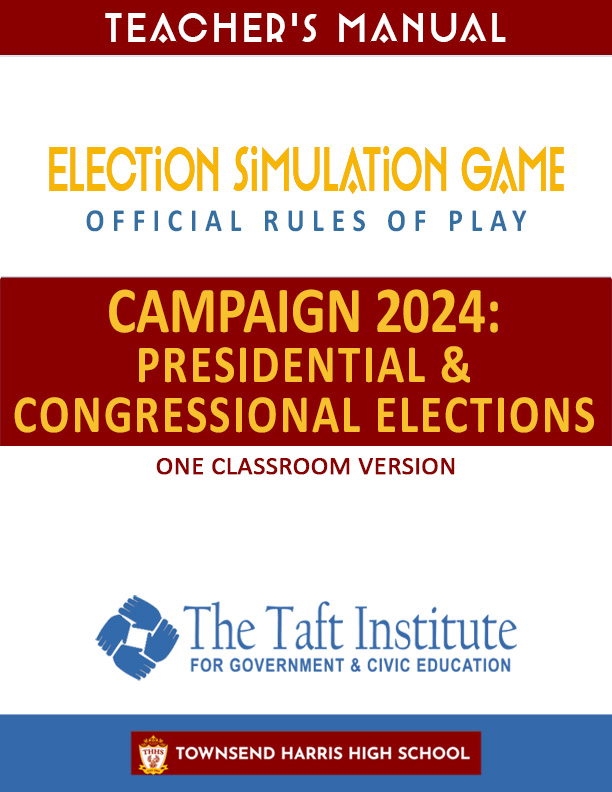
CAMPAIGN: 2023 REPUBLICAN PRESIDENTIAL PRIMARY & THE NEW YORK CITY COUNCIL ELECTIONS
This year's simulation game focusses on the Republican Presidential nomination process, but the general information on the makeup of campaigns, interest groups, and the media would also apply to a city council election. The Interest Groups represented in this manual are the groups that will play a role in the Republican nomination process.
Teachers who would like to include local interest groups in a New York City version of the simulation, or teachers who have any other questions should contact Professor Michael Krasner.
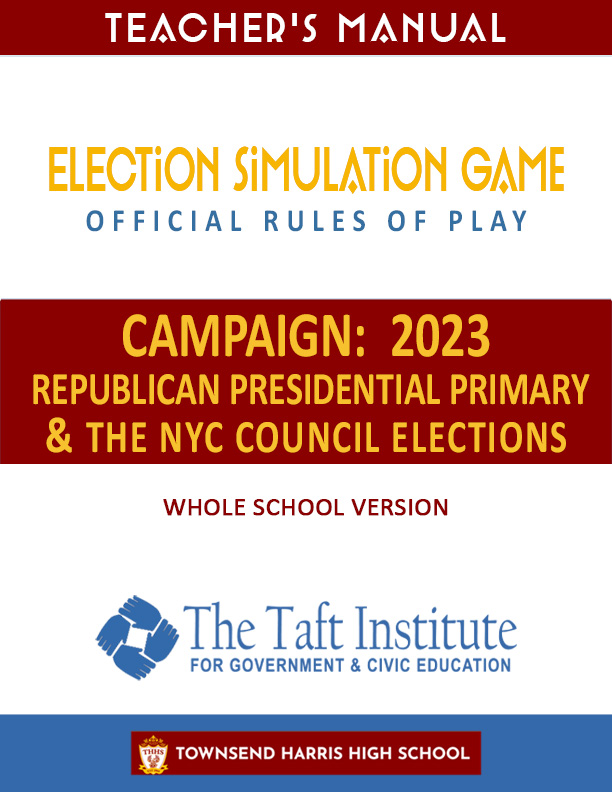
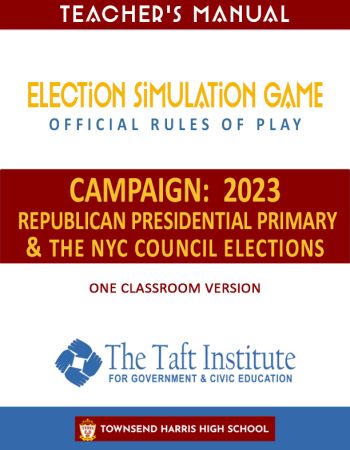
CAMPAIGN: 2022 NYC PRIMARIES
This simulation game focused on the New York State elections of 2022 and covers the races for Governor, Lieutenant Governor, Comptroller, Attorney General, State Legislature, and The U.S. Congress.
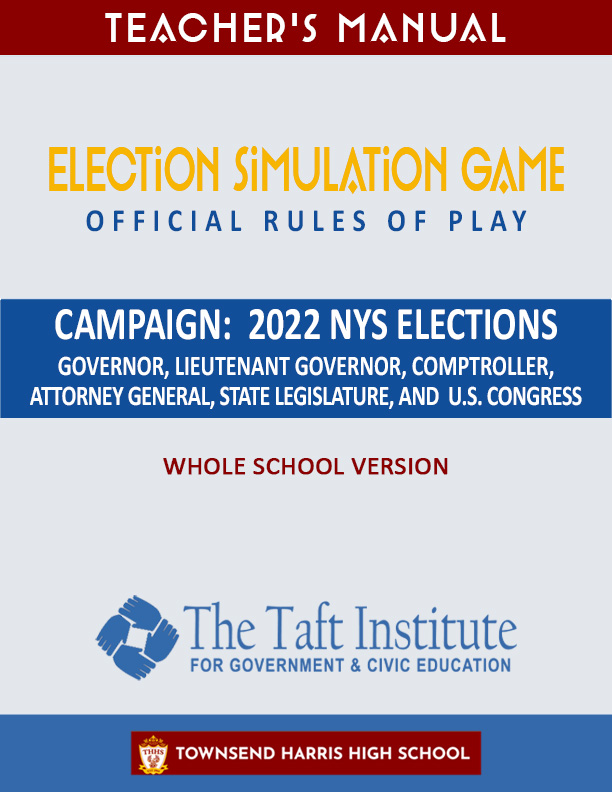
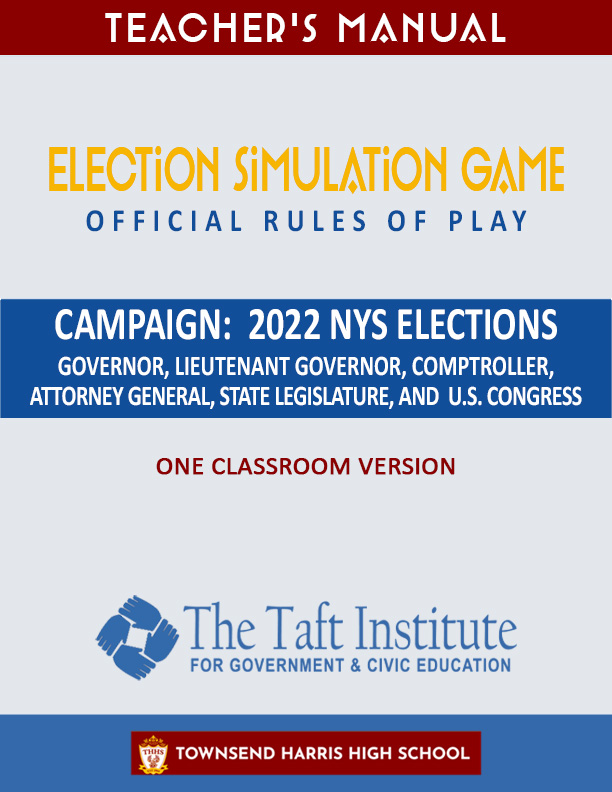
CAMPAIGN: 2021 NYC ELECTIONS
This simulation game focusses on the 2021 New York City elections, which occur every four years in the year following the presidential and congressional elections. The citywide offices include the mayor, the comptroller, and the public advocate. The entire city council (51 members elected from single-member districts) is also elected along with five district attorneys—one for each of the five boroughs (counties) of New York City—and five borough presidents.
As with all our election simulations, you as a teacher should feel entirely free to pick and choose the elements you will use.
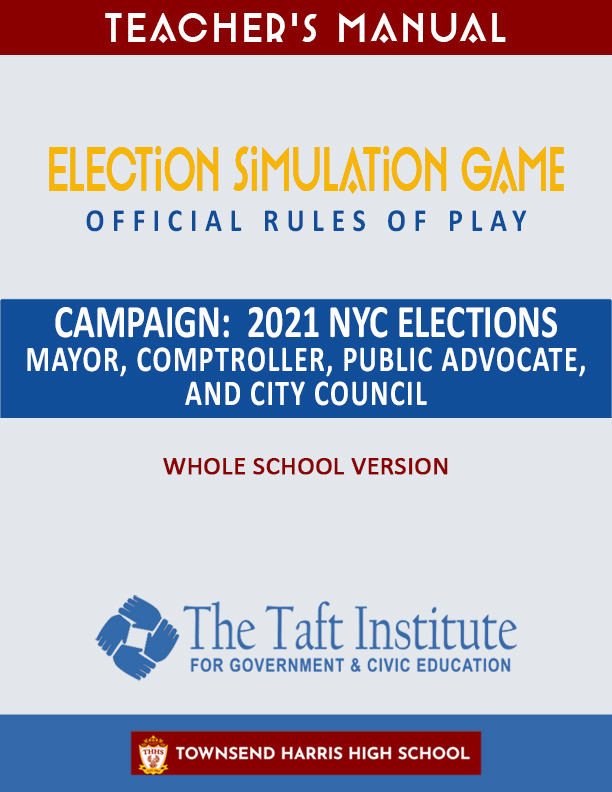
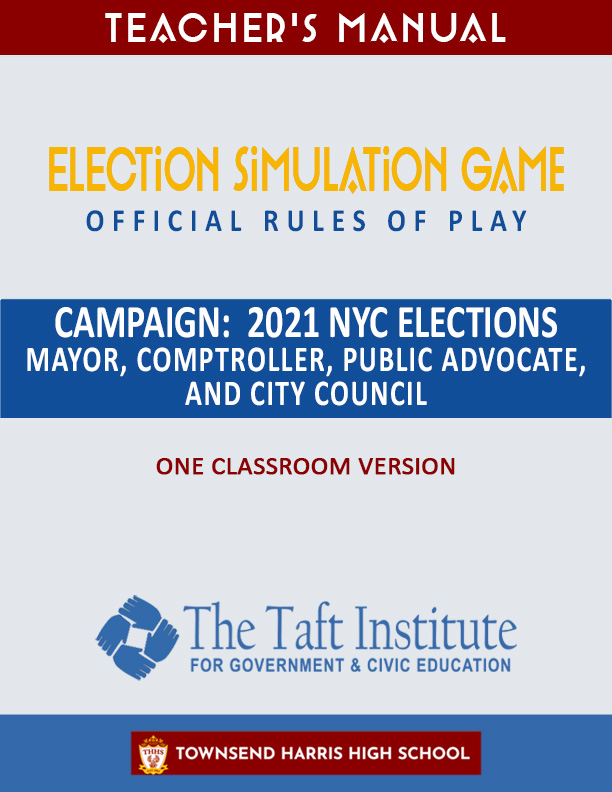
CAMPAIGN: 2020 PRESIDENTIAL ELECTION
This simulation game focussed on the 2020 Presidential election. Of course, one third of the United States Senate was being elected at the same time along with the entire United States House of Representatives. And in many states, governors and state legislatures were also being chosen. So, you could choose to include a local election.
We also include the superpacs that have become such an important part of our politics. With regard to this and all the other elements of the simulation, you should feel entirely free to pick and choose what you will use. You could do a one week simulation in one classroom that only focuses on the Presidential race. You could extend the time and the scope by doing one competitive Congressional race and going for two weeks.
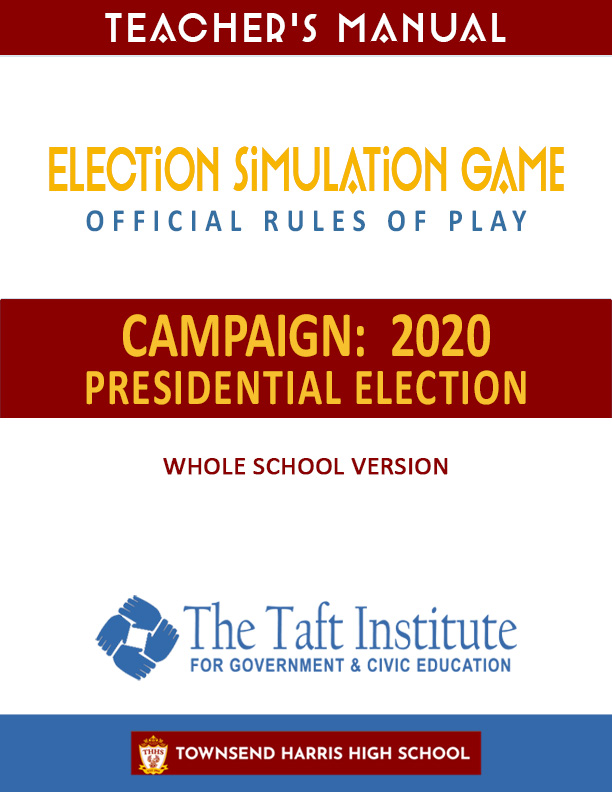
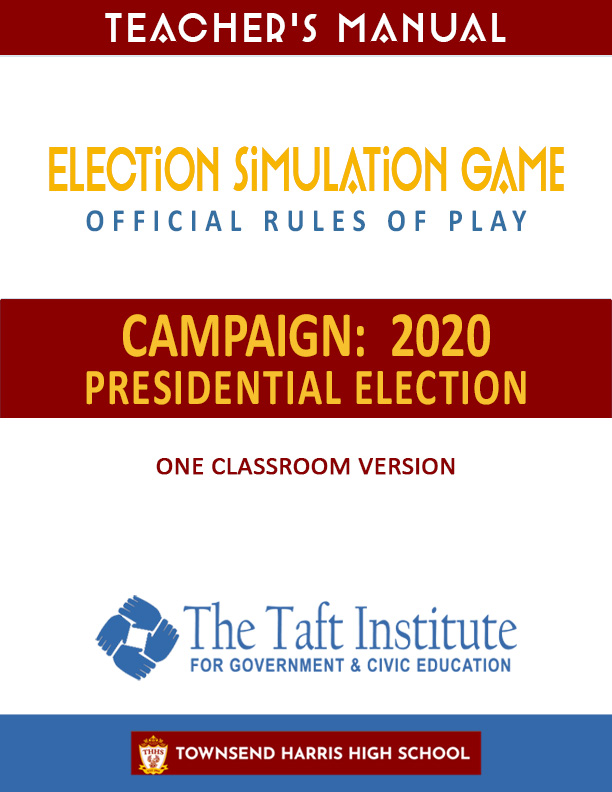
CAMPAIGN: 2019 PRESIDENTIAL PRIMARY
This simulation game focussed on the presidential primaries of the two major parties in 2019. One point to keep in mind is that a race that isn’t competitive in the real world can still be competitive in your simulation. Your “voters” don’t have to vote the same way as real world voters. They can be influenced by the events and people of the simulation to vote a different way.
In the simulations we’ve run every year since 1996, it’s happened quite often that the real world favorite lost in the simulation. So, in 2019 in the Republican Party’s nomination contest, Trump was the shoo-in favorite, but that didn’t mean that he would automatically win in our simulation.
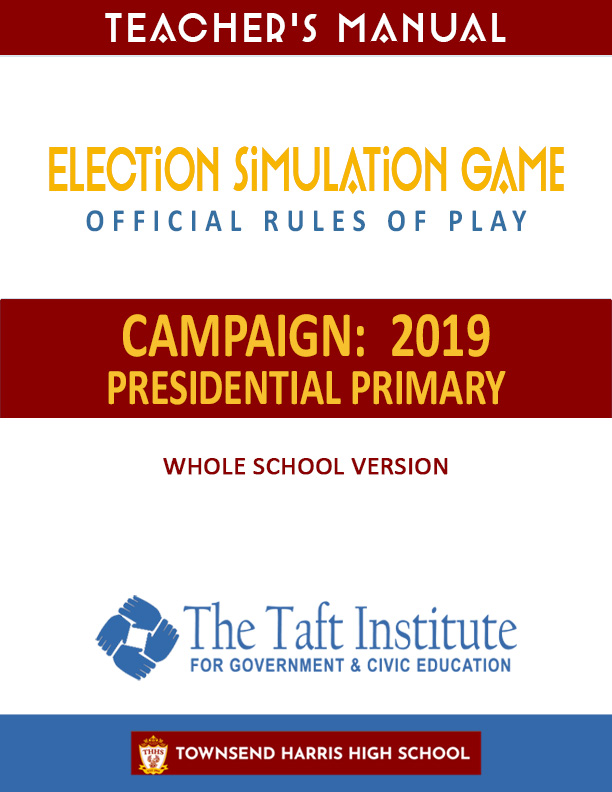
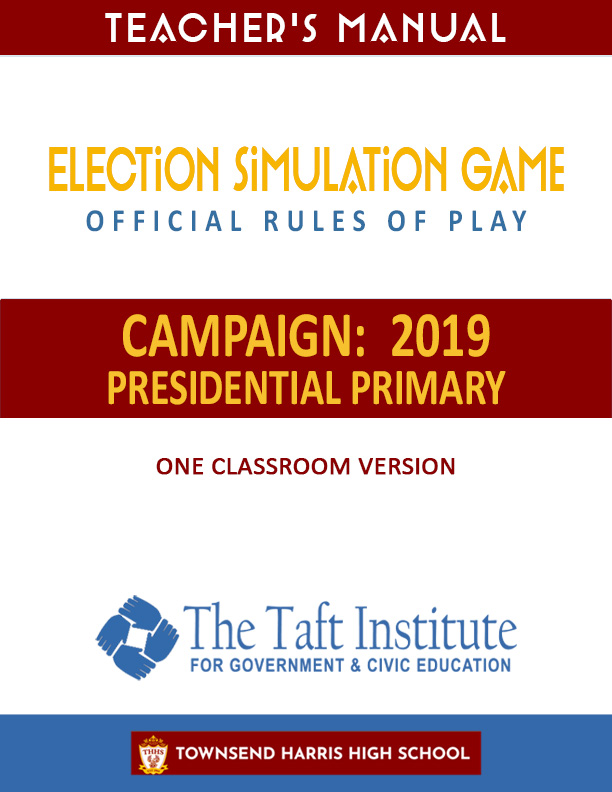
CAMPAIGN: 2018 NYS ELECTIONS
This simulation game focussed on the state level. In New York State, all the statewide offices—governor, lieutenant governor, comptroller, and attorney general—were on the ballot along with the entire state legislature, which has two houses-–the Senate and the Assembly—elected from single-member districts. Our whole school version included all the state wide offices and selected legislative races, but you could choose just to do a governor’s race or to do a governor’s race and one local legislative race. It’s all up to you as the teacher.
